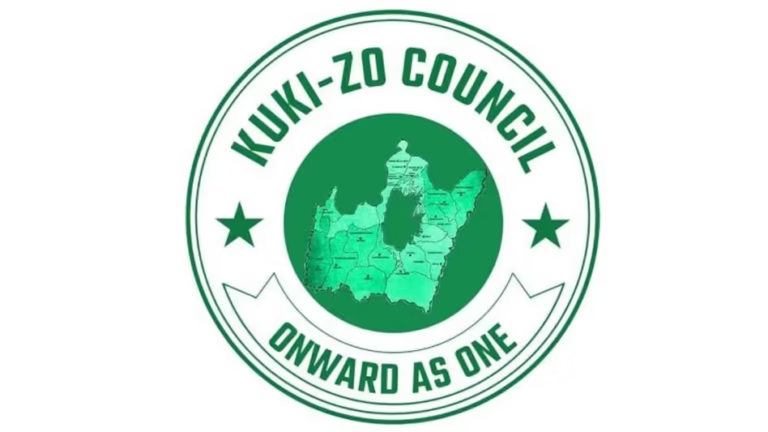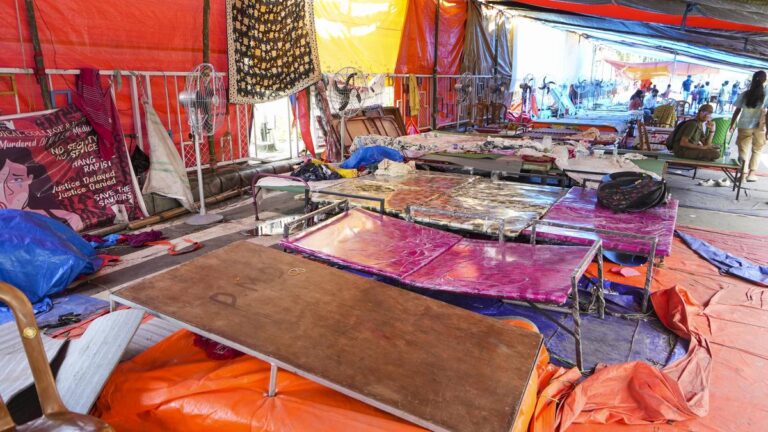Manipur Police Arrest Seven Militants, Seize Large Weapons Cache
Summary of the News Article
In a significant operation, Manipur police arrested seven militants and seized a substantial cache of weapons, underscoring ongoing efforts to restore peace in the region.
A Deep Dive into Manipur’s Security Operations: Arrests and Arms Seizures
Introduction
Manipur, a picturesque state in northeastern India, has long been a mosaic of diverse cultures and ethnicities. However, beneath its scenic landscapes lies a complex web of insurgent activities and ethnic tensions. Recent events have spotlighted the state’s ongoing struggle with militancy and the relentless efforts of security forces to restore peace. This article delves into the recent arrest of seven militants and the seizure of a large weapons cache, exploring the broader implications for Manipur’s security landscape.
The Operation: A Closer Look
On March 8, 2025, violence erupted in Manipur as ‘Free Movement’ began; a bus was attacked, leading to clashes with security forces. Authorities responded by arresting seven militants associated with banned outfits and recovering a large cache of weapons, underscoring efforts to restore law and order. IDRW+2The Economic Times+2Ommcom News+2
The Recovered Arsenal
The magnitude of the seized weapons cache is alarming and indicative of the potential threat posed by these militant groups. While specific details of the recovered weapons from this operation remain undisclosed, past seizures provide insight into the types of armaments these groups possess. For instance, in October 2024, security forces recovered an M-16 rifle, a .22 rifle, two Self-Loading Rifles (SLRs), a country-made Sten gun, two carbines, eight country-made 9 mm pistols, thirty magazines, and twelve two-inch mortars from various locations in Manipur. Such arsenals suggest a high level of preparedness and intent to cause significant disruption.ABP Live+1The New Indian Express+1ABP Live+2The New Indian Express+2The Times of India+2
Contextualizing the Arrests
The arrest of these seven militants is not an isolated incident but part of a broader strategy to clamp down on insurgent activities in the region. In February 2025, following the imposition of President’s Rule in Manipur, security forces intensified operations, leading to the arrest of over 30 militants from various insurgent groups, including the Kangleipak Communist Party (KCP), People’s Liberation Army (PLA), and Kuki National Army (KNA). These coordinated efforts reflect a robust approach to dismantling militant networks and curbing their influence.India Today+1The Economic Times+1
The Ethnic Underpinnings
Manipur’s insurgency is deeply intertwined with its ethnic composition. The state is home to the Meitei community in the valley regions and various Naga and Kuki tribes in the hills. Historical grievances, competition over resources, and political representation have fueled tensions among these groups. The involvement of militant outfits often exacerbates these divides, leading to cycles of violence and retribution.Reuters
Cross-Border Dynamics
Manipur’s proximity to Myanmar adds another layer of complexity to its security scenario. Reports indicate that fighters from Myanmar’s civil war have crossed into Manipur, aggravating the existing ethnic conflict between the Hindu Meitei community and the Christian Kuki tribes. These fighters, armed with sophisticated weapons, have intensified the violence, prompting the Indian federal government to deploy additional troops to the region. Reuters
Community Involvement and Surrender Initiatives
In a bid to restore normalcy, the Manipur government has appealed to individuals and groups to surrender looted and illegal weapons. This initiative has seen significant success, with organizations like the Arambai Tengol and various community leaders facilitating the return of arms. On February 27, 2025, ahead of the government’s deadline, 307 looted arms and a large cache of ammunition were surrendered to security forces, reflecting a collective desire for peace and stability. Ommcom News+1IDRW+1
The Road Ahead: Challenges and Prospects
While the recent arrests and arms seizures are commendable, they represent just one facet of a multifaceted challenge. Addressing the root causes of insurgency in Manipur requires a holistic approach:
- Political Dialogue: Engaging with various ethnic groups to address their grievances and ensure equitable representation can pave the way for lasting peace.
- Economic Development: Investing in infrastructure, education, and employment opportunities can reduce the allure of militancy by providing alternative livelihoods.
- Strengthening Civil Society: Empowering local communities and civil society organizations can foster resilience against insurgent influences and promote grassroots peacebuilding initiatives.
- Enhanced Border Management: Given the cross-border dynamics, strengthening surveillance and cooperation with neighboring countries is crucial to stem the flow of arms and insurgents.
Conclusion: A Milestone in the Journey to Peace
In conclusion, the arrest of seven militants and the seizure of a large weapons cache by the Manipur police marks a significant milestone in the ongoing battle against insurgency in the region. This operation is a testament to the power of coordinated intelligence, advanced technology, and unwavering commitment to public safety. It’s a beacon of hope for the residents of Manipur—a clear sign that progress is being made, one decisive step at a time.
Just as a well-tended garden flourishes with care and attention, the security landscape in Manipur is gradually transforming into a safer, more secure environment. The success of this operation not only disrupts the immediate threat posed by militant groups but also sets the stage for future initiatives that will continue to build on this momentum.
Let’s celebrate this victory while remaining vigilant, understanding that the journey to lasting peace is a marathon, not a sprint. With each operation, with each act of bravery, Manipur moves one step closer to a future where security, prosperity, and harmony reign supreme.
Frequently Asked Questions (FAQs)
- What prompted the recent operation by the Manipur police?
The operation was initiated following intelligence reports about militant activities and a large cache of weapons in the region, prompting a coordinated effort to arrest key militants and seize dangerous arms. - How did the police manage to arrest the militants and recover the weapons?
The success of the operation was due to a combination of advanced surveillance technology, meticulous intelligence gathering, and seamless inter-agency coordination, enabling the police to target the militants accurately. - What are the long-term benefits of seizing such a large cache of weapons?
Confiscating these arms not only weakens militant networks but also boosts regional security, enhances public confidence, and paves the way for economic and social development by ensuring a safer environment. - How does the local community play a role in such operations?
Local communities often provide crucial information and support through community leaders and local networks, helping the police gather intelligence and ensuring transparency and trust during and after the operation. - What future measures can be expected to further improve security in Manipur?
Future measures include continued technological integration, enhanced inter-agency collaboration, ongoing community outreach, and proactive strategies designed to adapt to evolving militant tactics and ensure long-term stability.




